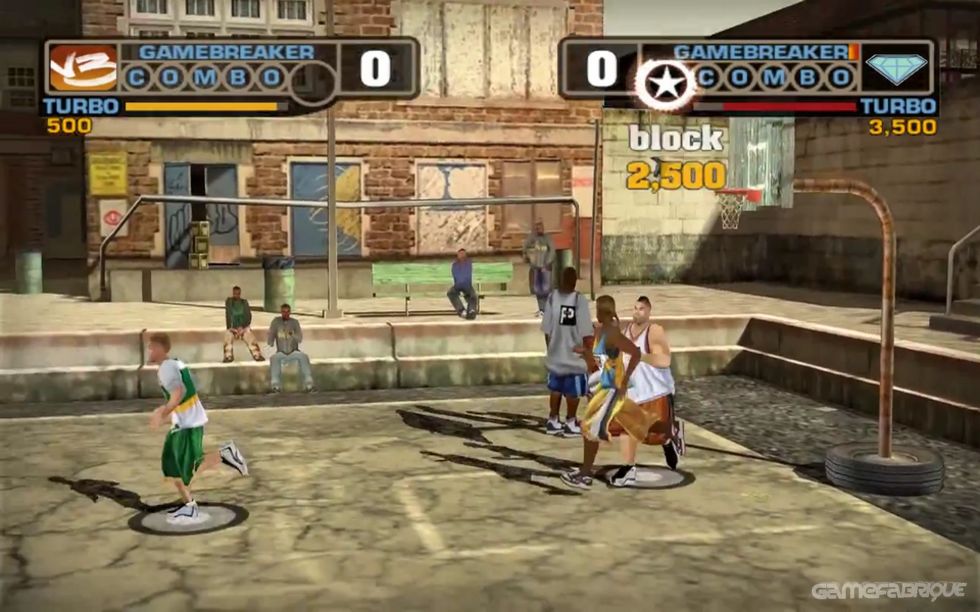

We wanted the moves in our game to speak for themselves, for the gamer to see them, feel them, and just be in awe of the talent on display. Just raw basketball and streetball talent. “No voice over, no special effects, no acting. “We were blown away with how the creative was all about skills and moves of the players,” Mozell said. In the commercial, anonymous streetballers and NBA standouts like Lamar Odom, Jason Williams, and Baron Davis take turns dancing and working the ball like a yo-yo in the spotlight of an otherwise pitch-black arena. Inspiration struck early in the form of the Nike Freestyle commercial, a two-and-a-half-minute spot that first aired during the 2001 NBA All-Star Game. “I kind of joke that I’m a method art director, I was just listening to hip hop non-stop when I was making that game.” “I was really into Jadakiss and Nas at the time,” said Gibbons. (There was goaltending.) When you went to dunk, your player was temporarily subject to lunar gravity, and he glided to the rim like a ballerina, like Jumpman. 2 did not seek to faithfully capture regulation basketball, but rather the everyday soul of the sport. The gameplay was fluid, dynamic, fast-paced-each game a 3-on-3 sprint to 21 points by 1s and 2s at streetball courts located around the United States. It paid homage to basketball as spectacle, as art, as cultural lynchpin. It framed basketball not simply as a sport played in identical, sanitized arenas across the country, but as a vital civic institution with its own history, music, and sense of place.

Sure, new technology has granted us games like NBA 2K and its hyper-realistic graphics and gameplay-but realism was never the point of Street Vol. Even 15 years later, the game’s sense of style and spirit (and not to mention its soundtrack) have never been matched. 2, the last truly great basketball video game.

It’s been a decade and a half since Electronic Arts released NBA Street Vol.


 0 kommentar(er)
0 kommentar(er)
